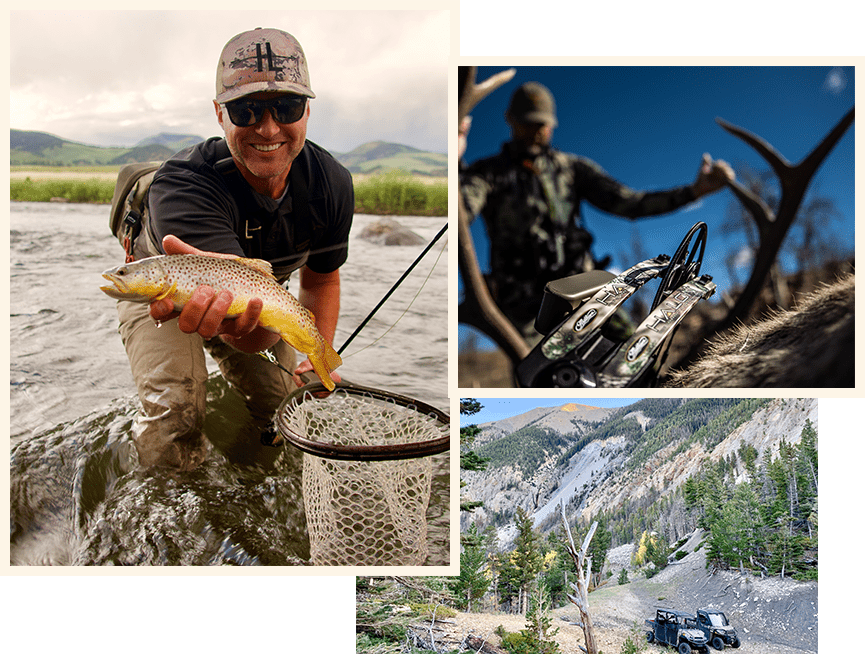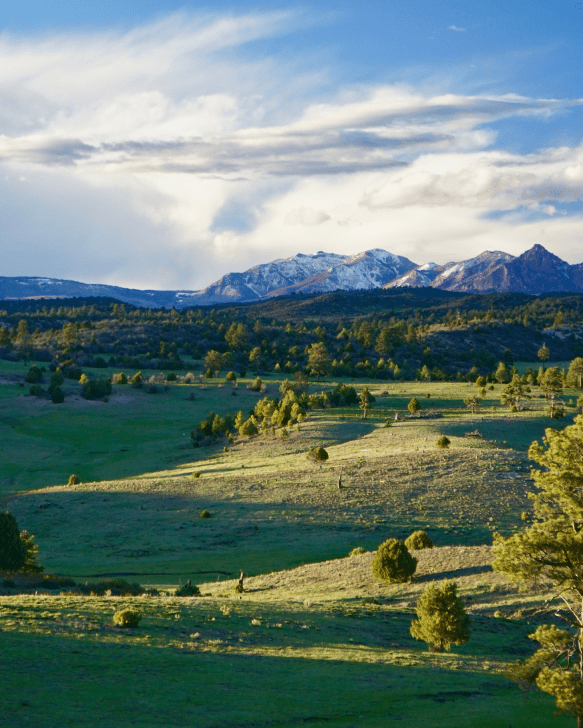Before buying a cattle ranch, you’ve got to completely evaluate its production potential and value. A ranch is a big investment. These 14 things need your attention as you explore different cattle ranches for sale in the Mountain West.
Ask yourself if a cattle operation fits into your business plan. Hopefully, you’ve identified your ranching goals to measure how any investment land meets your appreciable expectations.
Start with evaluating the basics. What location and weather do I want? Do we mind ranching neighbors or prefer secluded private land? And, if you tend towards one of the gorgeous mountain luxury ranches for sale, evaluate the condition of the ranch home and guest lodging as well as the aesthetics of the ranch before thinking about the cattle.
1. Type of operation
2. Carrying capacity
3. Condition of soil/plants
4. Ranch management record
5. Water rights
6. Stock water
7. Irrigation water
8. Wildlife, ecology, and geology
9. Infrastructure and facilities
10. Labor requirements
11. Needed equipment and improvements
12. Leases and easements
13. Taxes
14. Gross and net incomes- Type of operation
Zero in on the particulars of each cattle ranch. Working cattle ranches usually keep a tight margin between operating costs and sales. You need to play with different scenarios on the ranch property to see if it can accommodate your business plan.
A cattle ranch may accommodate cow calf pairs, only grazing, or it may double as a hunting ranch in a wildlife corridor. You’ll need to know big it is, the historic and more recent uses.
You’ll find two types of operators. Some cattle ranches will be owner operated. Owner operators normally live most of the time on the ranch.
Strict land investments usually have a management team and absentee owners. While some absentee owners hire a ranch manager, others simply lease their private land to ranching neighbors.
Western cattle ranches are either cow-calf operations or they are yearling operations. Cow-calf businesses operate all year and require more infrastructure and water. These operations focus on the longevity of the cows and weaning cows. They sell some calves and keep the rest.
Yearling operations provide seasonal grazing to increase weight gain. They focus on running healthy herds. The ranchers sell the cattle, replacing them with new cattle.
- Carrying capacity
Be sure the carrying capacity matches your business plan. The owner of the deeded ground usually makes this calculation. The carrying capacity measures the Animal Units and Animal Unit Months possible with this land investment. A mature cow weighing 1,000 pounds and her suckling calf make up an Animal Unit. If you can determine the optimum number of animals, you will know the carrying capacity.
But many large cattle ranches lease nearby public land, affording them more grazing land for their herds. The public land leases and records of the national forest service or the Bureau of land management the amount of forge per month per animal unit on public lands.
Then you’ll know the amount of forage you will need for grazing for one month based on the cow’s metabolic weight. You want to know the total amount of land needed between your deeded and leased ground. And don’t fret. Your ranch broker can point you to resources to estimate the long-term productivity of the pastureland.
- Condition of soil/plants
Paramount to the success of any ranching operation, the health of the soil and vegetation. Good ranchers monitor and manage soil and plants regularly. Cows need nutritious pastures for grazing. The quality of the water and vegetation for forage tell you if you’ll need supplemental feed.
Be sure to look beyond the paperwork for clues to evaluate the soil and plant life.
• Determine if the land needs an extended rest.
• Decide if the soil needs a remedy.
• What is the plant diversity found on the ranch?
• Do you have noxious weeds and non-native species?
As you can imagine, the need to cut production or invest funds will cut your short-term profitability.
- Ranch management records
Every cattle ranch operation needs management records. A well-managed operation uses them to keep track of every animal, purchase, and so forth. In addition, subsequent owners use these records to continue the operation.
Beyond those records are the experienced ranch hands. They do not have time to document each move and they are invaluable. Investors often seek the assistance of an existing operator owner or their management staff to assist with continuity.
Long term ranch management requires many skill sets. The ability to keep present staff with proven skills adds a wonderful boon to your new investment land, luxury ranch or working ranch.
- Water rights
Water right laws vary from state to state. Each parcel of private land comes with its own water rights – or lack of. It’s imperative to know the quality of the water, when it flows, and how to disperse water around the ranch.
- Stock water
Cattle need available stock water. The ranch must distribute water to various locations to be accessible to cows in every past year. Water comes from the wells, reservoirs, and streams. However, some water is toxic to cattle. During some periods of the year, rain and mud compromise the water supplies.
Potential buyers must determine the health of the stock water, alternative water sources, and ways to manage the situation to provide healthy water for their livestock. The water systems will affect future profitability. Will you need to improve the water sources?
- Irrigation water
Likewise, the quality of the irrigation water rights will determine the health of the crops. In the mountains, runoff helps with watering. Wells and pumps supplement the natural irrigation sources. You’ll want to find out how long the water sources continue during the hot months. Is there going to be enough water to irrigate for the winter feed or other crops.
Livestock operations require improvements. Well-designed facilities and corrals to handle the birthing and separating operation are essential. Large operations also require fences and roads, good past year, space to rotate the cattle and improve grazing conditions. In addition, some operations will need new squeeze chutes and structures that separate cattle from irrigated crops. Are the facilities sufficient?
- Wildlife, ecology, and geology
Examine the lay of the land. Is there woods or forest for the cattle to stay cooler during summertime? Deer could also bed there. Know the habitat and what wildlife frequent the area. You don’t want ravenous wolves taking out your cattle.
- Infrastructure and facilities
Livestock operations require improvements. Well-designed facilities and corrals to handle the birthing and separating operation are essential. Large operations also require fences and roads, good past year, space to rotate the cattle and improve grazing conditions. In addition, some operations will need new squeeze chutes and structures that separate cattle from irrigated crops. Are the facilities sufficient?
- Labor requirements
After you study the various aspects of buying a cattle ranch, you’ll have an idea about the labor needs. A smaller cattle ranch for sale could look desirable when compared with a larger cattle operation that has been dormant. In either case, cattle require a lot of care and so do substantial acreages, fencing, and watering. Paying employees will take up some of your cash flow and only you will know if you’d like to invest your own time and energy.
Think of grazing management, cattle nutrition, and a host of other expenses you’ll be taking on. But if you want to sink funds into equipment, housing and other capital improvements, a seldom-used luxury ranch for sale could be appealing for your ranch investment.
- Equipment and improvements
Closely examine the fences, corrals, buildings, and roads to determine whether or not you’ll need have expenses in those areas. What equipment do you own and what do you need? Look at the irrigators, pumps, wells. Check out the lakes and ponds, especially if you’re thinking of cleaning them up or creating a hatchery. Piping, water tanks, gates, scales, medical area,
- Leases and easements
Examine any conservation easement agreements along with grazing leases pertaining to the ranch. Know exactly how many units they allow. Public lands can increase your carrying capacity substantially.
- Taxes
Evaluate the taxes for every ranch for sale on your short list. Agricultural production may not save you as much as you think. Seek the advice of an agricultural tax professional.
- Gross and net incomes
Prices change in the agricultural realm. Your gross and net incomes will be variable. Whatever the seller tells you, realize it’s likely high. A well-run operation sees low income per cow. You’ll come to understand why so many ranchers diversify the uses for their land investments. Even so, most private land sees significant increases in property values over the decades.
Being Smart Buying a Cattle Ranch
Investors may not be ranchers, but ranchers do own land investments. Both perk their ears when a good cattle ranch comes on the market. To learn more, attend farm and ranch cooperatives. Ask your ranch broker to investigate. Ask questions until you feel confident enough to make the best decisions for your investment strategy.
Mountain Ranches – Real Estate Brokers
Let’s find you the right land investment. We’ll start with one of the West’s best cattle ranches for sale to fit your investment goals. Call the ranch brokers at Harrigan Land Company 303-908-1101. Serving Colorado, New Mexico, Wyoming, Utah, and Montana.
her


